Introduction
The Art of Mosaics, in one way or another, has been practiced for centuries, but mosaic as it is popularly known today was invented by the Greeks, who passed their skills to the Romans. Then with the passage of time, it was adopted by the Byzantines, who are epitomized for their ravishing wall and vault mosaics. Byzantium fell at the dawn of the 15th century and since then mosaic art went into decline until its forceful revival in the 19th century, which stretches to the present day. Mosaic Art has a long germinated history in Cyprus. During the 12th century, when Byzantine art was at its peak, mosaic art was on the rise too in Cyprus, through the use of mosaic art in churches and various monasteries. The history of this form of art goes back to more than 4000 years, initially with the use of terracotta cones pushed point-first into the backdrop for decoration purposes. By the 18th century, they were used in the pebble pavements, using various colored stones to create assorted patterns, although there were basically unstructured embellishments. But basically, it was the Greeks, in all four centuries who developed the pebble technique into a full-fledged art form with accurate geometrical patterns and detailed scenarios of people and animals. By the year 200 BC, specially designed pieces (“tesserae”) were being used to provide an extra bit of detail and color range. Sometimes employing tesserae just a few millimeters in size meant that mosaics could now emulate paintings. With this many of the mosaic paintings are now preserved like Pompeii, the work of a great Greek artist. (Winckelmann, np, 1872)
The Mosaic below shows the God Neptune with Amphitrite and is in Herculaneum, which is from Italy. This picture is basically a wall mosaic that uses tiny pieces of glass to give vivid color and reflect light. Although it was found that glass wasn’t the best for floor mosaic. In this case, the tesserae were mainly in the form of small cubes of marble or other precious stone. Sometimes bits of pottery like terracotta or brick was employed to provide a range of colors. The vast expansion of the Roman Empire took mosaic art to another level, although the level of artistry and dexterity was a bit diluted. In comparison, British art will be much simpler than Italian ones and have a lesser degree of technical distinction. In most cases, roman subjects revolved around celebrating their gods, domestic themes and various geometric designs. The inter inter-twined border of rope is generally called “guilloche” (Piper, np, 2002)
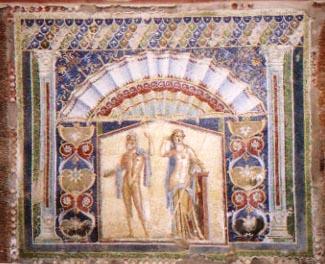
The link between Venice with Constantinople was obvious in many mosaics, especially in Byzantine style for which the islands of Lagoon are really popular. The earliest of these are on the Torcello, the first center of the Venetian state; this is where the cathedral apse is situated and contains a magnificent image of the Virgin and Child. With a rich background, we now investigate the essence and evolution of this form of art.
Ancient Mosaics
Since the dawn of time man has been attracted to images of all kinds. May it be botanical or animal pictures, that have been popular including human figurines, natural scenes or emblems. Conceptual designs are also accepted as universal graphics around the world. Modern civilizations have learned a lot about past civilizations through many historical art forms. Much valuable information is obtained from the viewing of paintings, cave drawings, mosaics and hieroglyphs. These tend to portray vivid stories about primal roots. Our undying curiosity to understand how our ancestors survived, what were the things important to them, has played a vital role in understanding the past truths. Art connects us to the past and provides a link to the future; it feeds our curiosity and unlocks barriers to the imagination. (Winckelmann, np, 1872)
Mosaics have often been called “patient work, worthy of muses’ ‘ in Greek mythology, the muses contained nine daughters of Zeus, the ruler of all heavens and mortal heroes living on earth. Each of them represented a particular art of science. These Goddesses were known for their invigorating poetic nature and provided spiritual guidance to those longing for particular endeavors. The Mosaic art form has been in existence for thousands of years with deep Greek roots. Some claim that it’s been around six thousand years since the inception of the first mosaic was pieced together. There isn’t any evidence to prove the timeline of how long the art has been in practice, but it would be appropriate to say that the creation of mosaics has been one of the oldest forms of expressing art. Mosaics were not only used for decoration purposes but to protect various surfaces as well. Mosaics have definitely stood against the tests of time all throughout the eastern world. All through Greece and China, decorations of mosaics still remain intact. The Spaniards and Arabs are also known for their impressive deployment of mosaics to beautify many surfaces. Many ancient mosaics continue to provide resonance through their unique stories from the past even after the first creation long after their first creation. The long unresolved debate of who actually created the mosaic art form continues. Irrespective of who it was, it is imperative to acknowledge that people around the world have always possessed an interest in decorating surfaces with many different sorts of coverings. As human beings, we have an indulgence for visually attractive things as they create a pleasant ambiance that withstands all the external elements. To do this in the appearance of lasting art is truly inventive.
Importantly the Chinese understood the essentiality of living in harmony with the entire natural world. They strongly believed in working with nature and not against it, they believed this was the key concept in balancing the two worlds. Some of the earliest engineering technologies developed by honoring this very concept have gone through minimal changes since its initiation. By skillfully using stones and pebbles which were readily available to them, dirt paths presided with artistic designs formed with the rocks themselves. By cleverly harvesting the natural resources that the land freely presented, Simple materials revealed functional mosaic art forms. The Chinese have for long emphasized creating functional settings that invigorate all the senses. They found the many hidden facets that mosaic pathways had to offer. Pebble floors largely kept the area clean and the dust to the minimum. Importantly the pebbles provided an efficient water drainage system away from the surface. The mosaics’ interlocking pebbles strengthen the overall foundations and guard the surface against erosion. These pebble mosaics were found to be comfortable to the foot and tended to make a level floor at the time of designing property. Centuries of passage have had little or no effect on changing the mosaic marvels. Some of these exquisite mosaics blend harmoniously into the natural settings and lend a casual touch to the most formal settings. Numerous designs can be achieved through creative arrangements, even when working with a single color. What has vigorously gained mosaicist recognition is the longevity of their artistic work. The functional aspect of mosaic art is being both decorative in nature and protective to a surface has always been appealing to people’s senses.
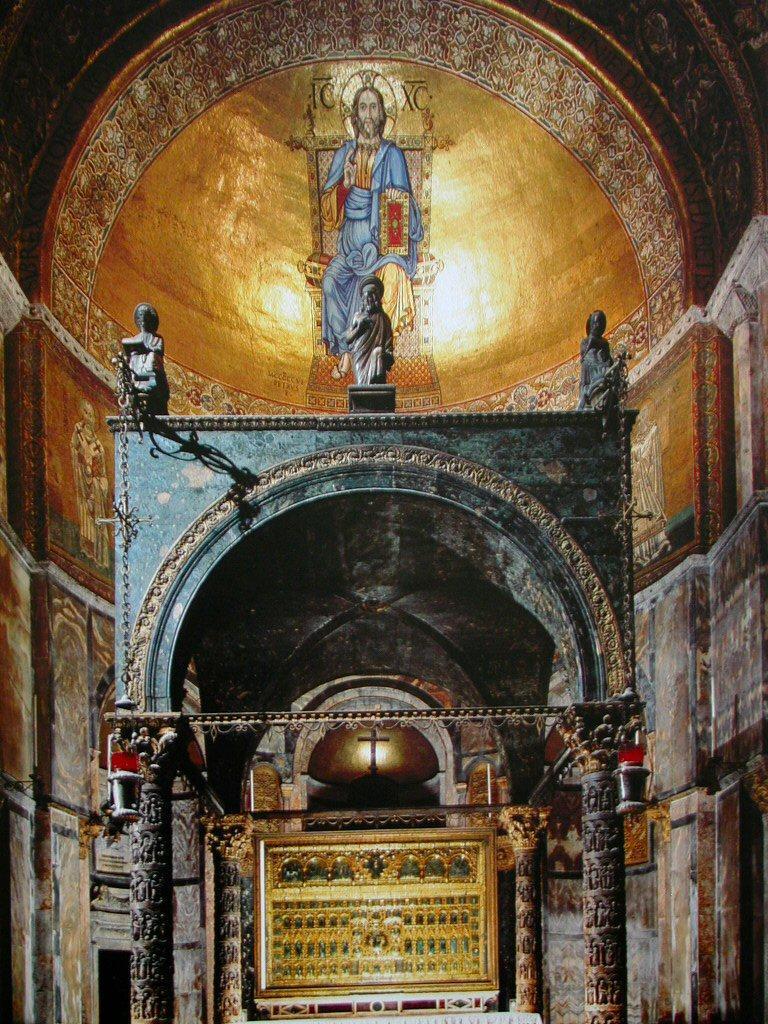
The Greeks were well renowned for their phenomenal mosaic murals. The mosaics had the dexterity to depict real-life scenes with visual depth and dimensions by using advanced shading techniques. The diction of artistic prowess is highly commendable even by today’s standards. In the earlier time, it was common for young men of Europe to travel abroad to gain hands-on training in culture. Once being thoroughly exposed to the creative use of mosaic art throughout Greece, people fathomed the possibility of covering the surface with a new fiancé. This all resulted in the new movement of mosaic art all through Europe, where this form of craft held high prestige in the eyes of trade smiths for many generations to come. Certain artists gained great recognition and were in high demand, but the process of devising a mosaic art piece was so time- consuming it created long waiting lists. The Vatican on the other hand in Italy has over one million pieces of mosaic enveloping its sacred walls. This form of artistry has created interest for travelers around the world. Michelangelo Buonarroti (1475-1564) is highly proclaimed for his phenomenal paintings and sculptures, but only a few know he has been an accomplished musician as well. Many people tend to visit St. Peter’s Cathedral to view the work of Michelangelo on the ceiling, but more often than not mistake it for a painting. It certainly is not, this creation is a mosaic. Historically mosaics were found in homes used to welcome guests. In many cases, the presence of a mosaic was used to depict the social status of the family living there. Because of the time and money invested in such an art form one carefully considered the placement of the artwork. Favorable display areas were chosen where it could be seen well or where guests could view it. Mosaics usually depicted colorful scenes or intricate geometrical patterns. However even the simplest mosaics spoke volumes, there is this little something that those little pieces puzzled together to create a welcoming aura. Whether devising a simple pattern or a complex pictorial design, mosaics have been created with a lot of pride. Mosaics in Greece were called “an external art form”. Any form of art withstanding the test of time and critics is worthy of such a title, and can definitely be found fit to be any muse. One’s custom ironstone Mosaic will tend to offer a lifetime of natural beauty, and will always greet your guests even though you may not be a muse. (Piper, np, 2002)
Using millions of pieces of stones or glass to create art was a very painstaking job along with being an expensive decorative piece. Yet the art of mosaics enjoys a lot of accolades in Greco-Roman civilizations, where its parishioners have created some of the most exquisite artworks in history. The evolution of mosaic art from the Hellenistic era to the Christian era is quite magnificent which we will see later. Mosaics have made the journey from dirt roads and pavements to walls to the imperial floor and ceiling decoration which is vividly portrayed in the blue and gold work of churches in Rome, Ravenna and Constantinople. Mosaic artists have employed geometric patterns, figurative scenes of mythology, agriculture and explored different facets of our ancestor’s way of life, materials and techniques they used. In general, there are few written or maintained records of mosaic techniques. The most detailed information regarding the inception was somewhere around 77 AD b Pliny the Elder, who was a Roman officer and an encyclopedic in his 36th volume of the Natural History presented the techniques of preparing the grounds for a mosaic. The famous mosaics of Villa Romana del Casale near Piazza Armerina in Sicily are the largest collection of late Rome-based mosaics and are safely protected under the UNESCO heritage site. The huge villa Rustica which was owned by Emperor Maimian was built around the 4th century. These mosaics were protected under a landslide for about 700 years. The most important pieces that stand today are the Circus Scene, the 64-meter long Great hunting scene, the little hunt, the Labors of Hercules and the famous Bikini girls. It portrayed girls in modern bikinis. The peristyle, imperial apartments and the well-renowned thermae were also vividly decorated with decorative and mythological mosaic. Other very famous arts in Sicily were discovered on the Piazza Vittoria in Palermo where the famous two houses were discovered. The essential scenes depicted Orpheus, Alexander the Great and the four seasons.
Modern mosaics
The crude revival of the mosaic art form in the 19th century has attempted to put forward some modernity. The Westminster Abbey and the House of Parliament were one of these. In the 20th century, however, the medium was employed with a much deeper understanding of the techniques, as in the new era of mosaics for the Stockholm town hall. In the modern work the ancient system shares deep favor with new ways of fastening the tesserae with glue on top of a paper cartoon drawn in reverse, by applying fairly large sections into the right position on the wet mortar, and finally washing away the paper after the mortar has dried and the tesserae have set. All throughout Europe, the art of mosaic went into general decline in the middle ages. However, the emergence of a flourishing tile market led to mosaics tile decorations in abbeys and many other religious buildings, for example, these tiles from Prior Crauden’s Chapel at Ely Cathedral somewhere around 1320. The floor of this chapel depicts vivid scenes of Adam and Eve. As well as fascinating interlocking patterns of tiles, these include the various mosaic techniques including pseudo mosaic and opus sectile. (Locktov, 99, 2005)
Somewhere in the 19th century, there was a strong revival of interest, in particular the Byzantine style, these included buildings like Westminster Cathedral and Sacre-Coeur in Paris. On the other hand in Britain, this was all propelled by the concentration of wealth the Victorian era brought, with the increase in public and domestic building projects. This brought into being new techniques of producing tiles in bulk brought about a renewed interest in tiles for decorating floors. This Gothic revival in architecture and design was strongly based on medieval themes and this was largely depicted in the way the tiles and mosaics were used. Another influence in this time was Antonio Salviati, who is given the credit to instill life into the Venetian glass industry. He identified the business opportunities in matching the ancient skills employed in Venice with the Victorian longing for glass mosaics. The Art Nouveau movement also accepted mosaic art. In Barcelona, a man name Antoni Gaudi worked along with Josep Maria Jujol to produce one of the stunning creations of modern time the Guell Park in the first couple of decades of the 20th century. This creation used the technique called trencadis in which the tiles (both purpose-made and wasted material) covered the surface of many buildings. They also employed broken crockery and other found objects to match the material, this proved to be a revolutionary idea in formal art and architecture. Various kinds of found objects have been used for mosaics material in numerous amounts of ways. An example is the Victorian shell grottoes and “putty pots”, wherewith china and many other items (toy figures and buttons) are fastened to a base of linseed putty. This kind of personal art collage of personal objects with connotations to everyday life was also sometimes called “memory ware”. An influential place for all this has been the La Maison Picassiette (located in Chartres, north of France), this included the idiosyncratic work of Raymonde Isidore between 1938 till about 1964. Being a middle-aged manual worker, he enveloped his entire house and garden with intricate patterns of mosaics with broken crockery. He was conveniently named (“Picassiette”) which originated from the French expression of “scrounger”. This expression “pique assiette” – is the name allocated to today’s very popular style of mosaic. (Winckelmann, np, 1872)
In today’s world mosaics, mosaics and more mosaics. It seems to be prevalent everywhere our eyes travel that we can see mosaics. It is an art form that has resurfaced as a popular form of decoration. Be it tables, candle holders or flower pots, garden pathways or stepping stones, coasters and about anything we can imagine to see covered in mosaic art. The best thing about modern mosaics is that they can be made with a number of materials. Ranging from the traditional tessera and glass to the mundane resources like stones and beads, to the contemporary bottle caps, industrial waste, nuts and bolts. As mentioned earlier mosaics are seen widely in public places today. The magnificent architecture of the yesteryears stands proudly as a tribute to the talents and dexterity of artists long gone. Whether it be floors, ceilings or walls, decorated interior and exterior. One cannot help taking pleasure from their view, contemplating with shock the effort and time-consuming patience of the artists who created such exquisite artwork. Chicago abounds with exquisite mosaic art treasures, which are found in architecture and art. Mosaic art has always received the utmost appreciation in regard to its style. It is believed that one cannot fully appreciate art unless a similar task is undertaken. In the modern setting mosaic art may be found in non-traditional kitchen countertops using broken tiles to pathways in gardens incorporating colored glass in cast concrete. In this era, you might pass a day without the sight of mosaic art. The cost implications in traditional mosaic art by using glass or ceramic tiles make it compatible with modern requirements. Most art teachers today tend to find fitting substitutes to introduce this art in an advanced class. Many cost-efficient materials can be found pertaining to the size and weight of the materials, important adhesive and resource requirements. Storage size and cost will also play an important role in such decisions. (Piper, np, 2002)
A completely different aspect that is untouched here is that many hardcore art lovers who have dedicated their lives to art are unaware of the existence of the mosaic art form which is active today. It was also said by someone in Germany that mosaics are an art form without importance, skill and talent. This is the attitude of many people in the general public, major authorities and those who commission buildings. When in the late sixties or so, a complete history of mosaics from the Sumerians to the present era was prepared, there was ample data of the Greco-Roman and medieval-Byzantine periods available on all their phases, monuments and sites. But nothing was found on the development of mosaic art after the Renaissance, maybe just an odd article in a journal or magazine. In Ravenna, some modern styles based on designs by various painters were called autonomous mosaic, a term which means a mosaic fully independent of the art of painting. The distinction between the two is practicing mosaics and the painter designer who used techniques based on the brush but was not entirely familiar with the quite stylistic requirements of mosaic art. This was the cause of the decline of mosaic art after the Renaissance era. THE MOSAICS IN London by the German late Hans Unger. With the help of Eberhard Schulze, he had designed and developed a Busabout, a true masterpiece of mosaic creation backed by London Transport, printed and portrayed in all tube stations. This masterpiece is a monochrome mosaic, made of all white marble and contains all abstract geometry, yet not completely abstract but contains the paradigm of the London Map with all the streets and intricate characteristics crescents. Cleverly the outlines are not laced with black tesserae but white ones slightly extending beyond in relief, so that the shadows are what create the outline. In an extreme corner, there is a tiny touch color, an elegant grace note, a visual joke one can say, a Red London Bus. It is one of the mosaics of standard and par excellence which can be compared to the works of Lucio Orsoni was to achieve later on. But this was different in a way as Lucio’s monochrome touches are in fact polychrome made up of various scales of different shades and colors, which the dexterity of his brother Ruggero produces intricate varieties. (Locktov, 99, 2005)
After exploring these examples of modern mosaics many studies have been carried out in different directions. Many include visiting mosaic artists and their studios, monuments or schools in various European countries in America and Tunisia, as well as the factories where the actual tesserae are produced like Orsoni’s and the Vatican. Artists have accumulated from England, France, Germany, Japan and Belgium. The late Rokuro Yabashi was the father of mosaic art in Japan, where it is now gaining momentum. Indeed there is abundant material to validate that mosaic is quite popular now. This isn’t just in Europe but around the world, even though modern mosaics can be found everywhere people are still aware of their existence in the modern world. Not only in temples, palaces, churches and villas but now in schools, sports centers hospitals and banks airports, etc. mosaic art form is just no longer a cleric and aristocratic art form, it is in many ways become democratic and totally diverse which are just subject to styles.
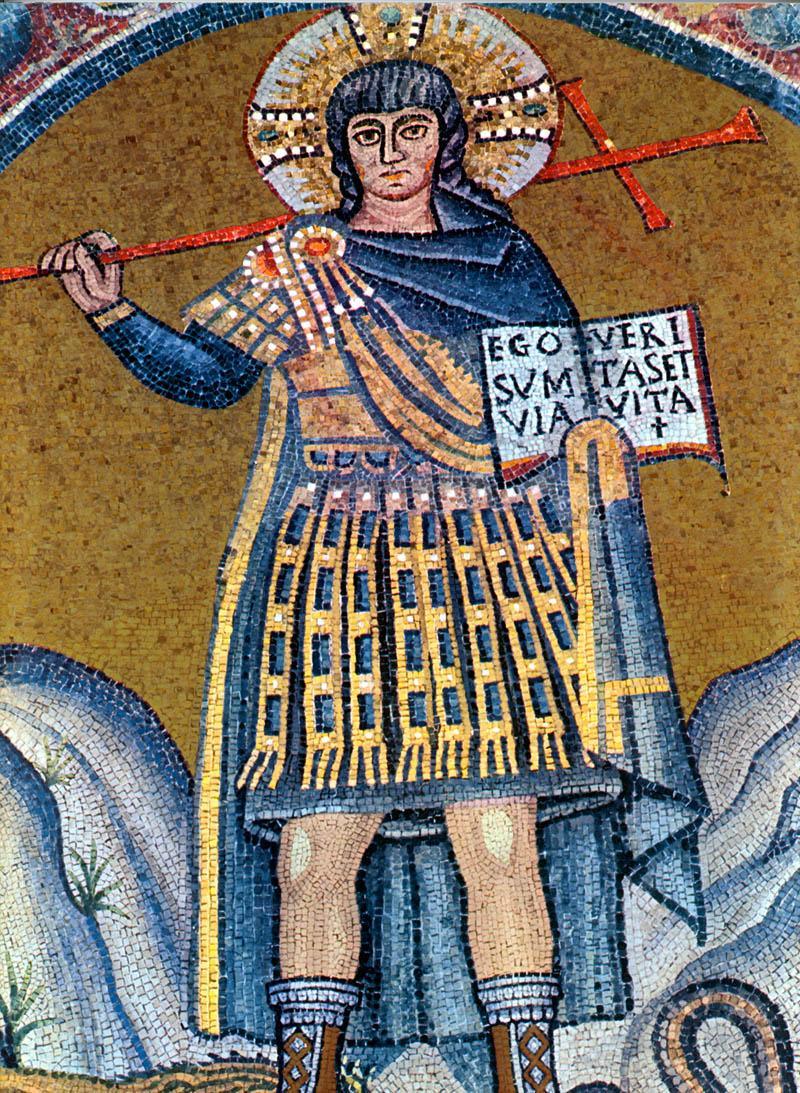
Comparison and Contrasting styles of the two eras
It can be said that although this art form has come a long way, evolution has in many ways not lost its original essence. With time everything changes, innovation and culture play an important part in any form of art. But its elegance and quality seem to have been more appreciated in the ancient era. In today’s fast-paced life, people see mosaic art in their everyday life but fail to notice it or give it the due recognition it deserves. In the past, people used this form of art as a symbol of pride and class. Although there is no question that the art of mosaic died down after the Renaissance era, it has had a fitting rebirth. There is also no doubt that a contemporary mosaic is capable of being truly contemporary. The essence of ancient art can also be termed modern. So we can conclusively say that mosaic art had not completely died down during and after the Renaissance, but that has definitely resulted in its rebirth, and it can be made use of the stylistic pluralism of 20th-century artists. The ancient art can also be translated into a very modern art form, this can be achieved through the composition of small pieces of marble or glass or other less costly resources resulting in simplification to stylization to spirituality. From its conception mosaic has applied the underlying principle of French pointillism and Italian divisionism, of Op Art, a montage of objects. We find that the number of mosaics is greater today, and one will have to agree to a certain degree that the quality of contemporary pieces can be matched with their ancient counterparts. (Cheek, 135, 2004)
In hindsight mosaics have always been intricately linked to architecture, in a way strengthening and decorating floors and walls; in modern architecture, especially the Bauhaus type, as well as the modern types, has offered many surfaces for mosaic decorations. One may also say that many artists are forced to sell copies of old mosaics to tourists to earn their livelihood, or small decorative Italian objects called oggettistica, which include coffee tables, frames for mirrors and like stuff that is beautiful to the eyes but do not possess the same magnificence of an artistic mosaic piece. There exists an economic problem because the artists of the past and present in the early centuries brought exquisite decorations to the walls of the basilicas. Somewhere around the 4th century, the winning arch between apse and nave and walls directly above the naves arcade were decorated with mosaic art, while the entire domed apse was lined with some sort of mosaic picture mainly of Jesus enveloped by saints and apostles. It is rare to find such adornment in today’s age in the era of Byzantium which was later called Constantinople became the center of the craft and reached complete perfection in the 6th century. Hagia Sophia has cleverly presented gold backgrounds which have been the pinnacle of Eastern mosaic which later was adopted by the west. A gold tessera was usually produced by applying a gold leaf to a glass cube and covering it with a thin sheet of glass to protect against any sort of tarnishing in ancient times however the tessera in the olden days was produced with the use of metallic oxides. In that era, the tessera was placed by hand in the damp cement mortar, and all the concluding irregularities, caused the outward to reflect different colors at different angles. It would be a highly curious and extremely fascinating task to demonstrate how far a particular art form of a country and especially the epoch is determined by the material it uses; how far mere and obvious accidental fashions occur in craftsmanship have constrained or stimulated an artist’s vision. The concept of ingenuity and inspiration is so dearly loved by our public undoubtedly that a mosaic artist is projected into our sublunary world with so great a force that this course is unaffected by accidents of place, fashion and time. An artist of the mosaic is born with a vision, messages so absolute that he will find means to discover the materials and work. But as admirers, we are sometimes content with pedestrian and humble theories. Mosaic artists over time have tried one theory or another to express their thoughts and nothing satisfies the mosaic artist until his true vision is depicted. (Piper, np, 2002)
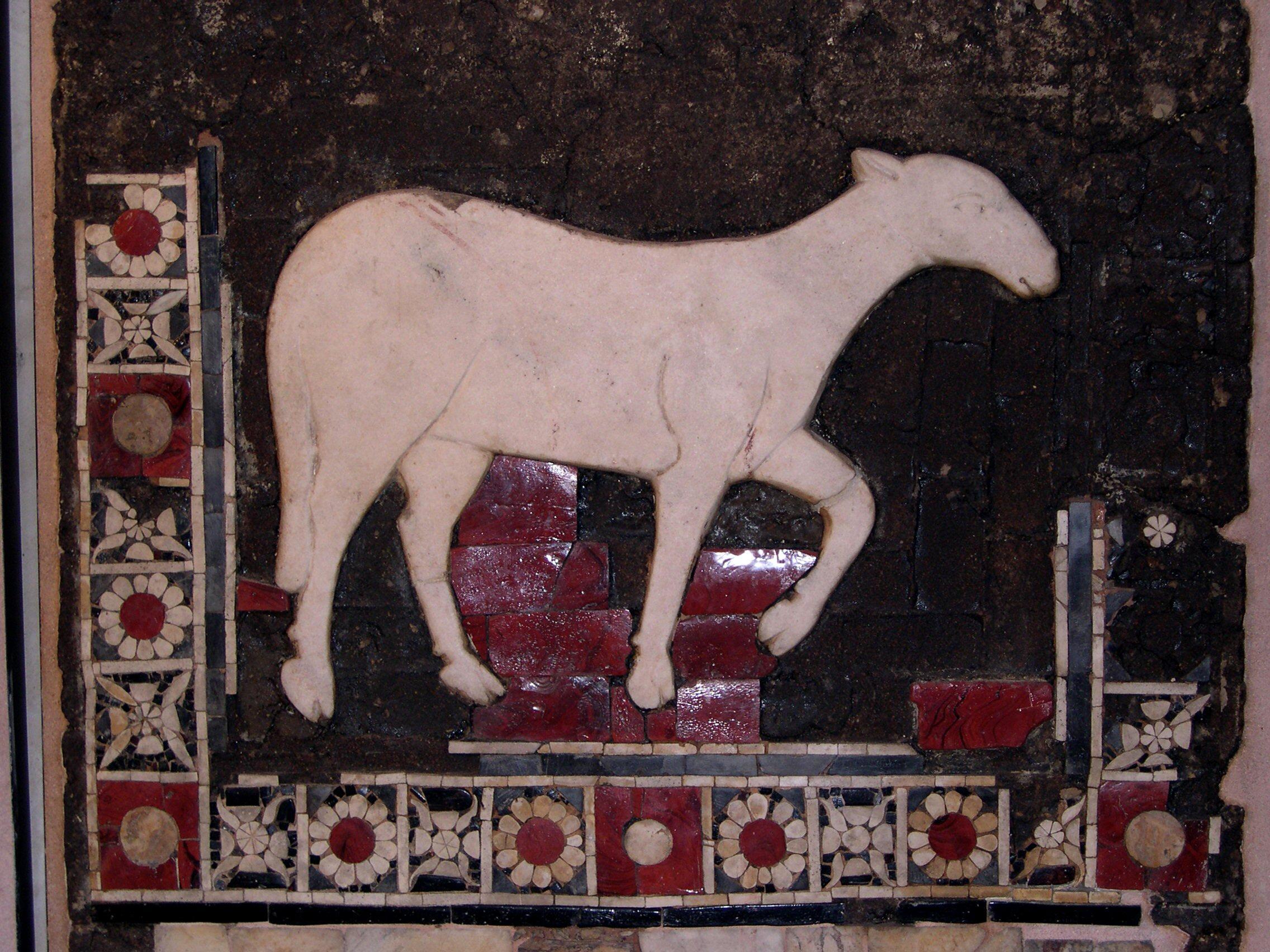
Inspiration may not necessarily come as often as one may like, and it presents a great number of limitations at times. And from all the pictorial forms of art, the art of mosaic brings about the most curiosity by the people of the middle age. This denomination of the went represents a large pool of glass painters of the first part of the 12th century and in some way, partial royal represents the effort of workers as a whole in another medium. Both of these are masterpieces of the 12th century and proved to be the grandest models and worthy of the most inspiration for a number of copyists throughout the second half of the same century. No technique like the art of mosaic has had an odd and to some degree capricious history. It would be difficult to determine which ground this art form was either accepted or rejected at various times in the western world. One can easily observe a common ground for its development among the rich and famous of the Roman Empire, and it’s ever-growing popularity in the monuments of the Byzantine churches. It was further developed by the Romans who sacrificed its prime advantages and incline to qualities that were furthest from natural materials. The Christian church continued this with the best of results by finding an apt medium for portraying thoughts of realization and vision. Romans on the other hand were so merely satisfied with the portrayal of nature. The somewhat sporadic attempts to revive the art in the high Renaissance of the 17th century were destined for failure. (Cheek, 135, 2004)
In the early 1870s, there were technological advancements in the materials used in mosaic work. The product called tesserae was developed. Tesserae were a pre-made product specially designed for the preparation of mosaic work. It was usually purchased in silver and was made as small as 1mm wide. This allowed the creation of fine mosaic work. This form of art was widely used in jewelry making and furniture. Examples of mosaic artwork aren’t restricted to pathways and walls of basilicas like in ancient times but in modern times they aren’t restricted to interior design and historical villas or churches. Commercial buildings have also embraced mosaic art designs. The London underground in the UK presents many mosaic decorated walls. Presently mosaic work is experiencing a revival and is extremely popular, especially with interior designers in homes and offices. Sections of mosaic art are also used in decorating kitchens and bathrooms. Mosaic art classes can be taken at arts and crafts stores or other community centers. We can actively view mosaics in museums and such. Pictures are displayed from other countries that consciously preserve the architecture of buildings that use mosaic art. Some of the most popular examples are the cathedrals in Cefalu and Monreale as well as the Martorana church in Palern and Cappella. At the absolute dawn of the 21st century, there were about 5 mosaics that were discovered from the first or second century Libya, which is now carefully preserved and not on display anywhere. On the other hand in Venice, the St. Mark’s Basilica is covered with intricate golden Mosaic.
Conclusions
During the decades and centuries, a more than decisive change has taken place in our appreciation of the Byzantine and Cyprus art forms. It would definitely be hard to believe that Byzantine art was considered to be sterile and decadent, as an art style from which every trace of life has been removed and on which an art form has seemed to congeal into mere formulae. To our forefathers, Byzantine art appeared to be so aloof from modern viability and claimed a sort of interest as a historical phenomenon while today’s artistic greatness is universally acknowledged. How did this evaluation come about? Part of this answer can be found in the brief studies we conducted through the previous three chapters of mosaic art in general and Byzantine art as a chief mediator.
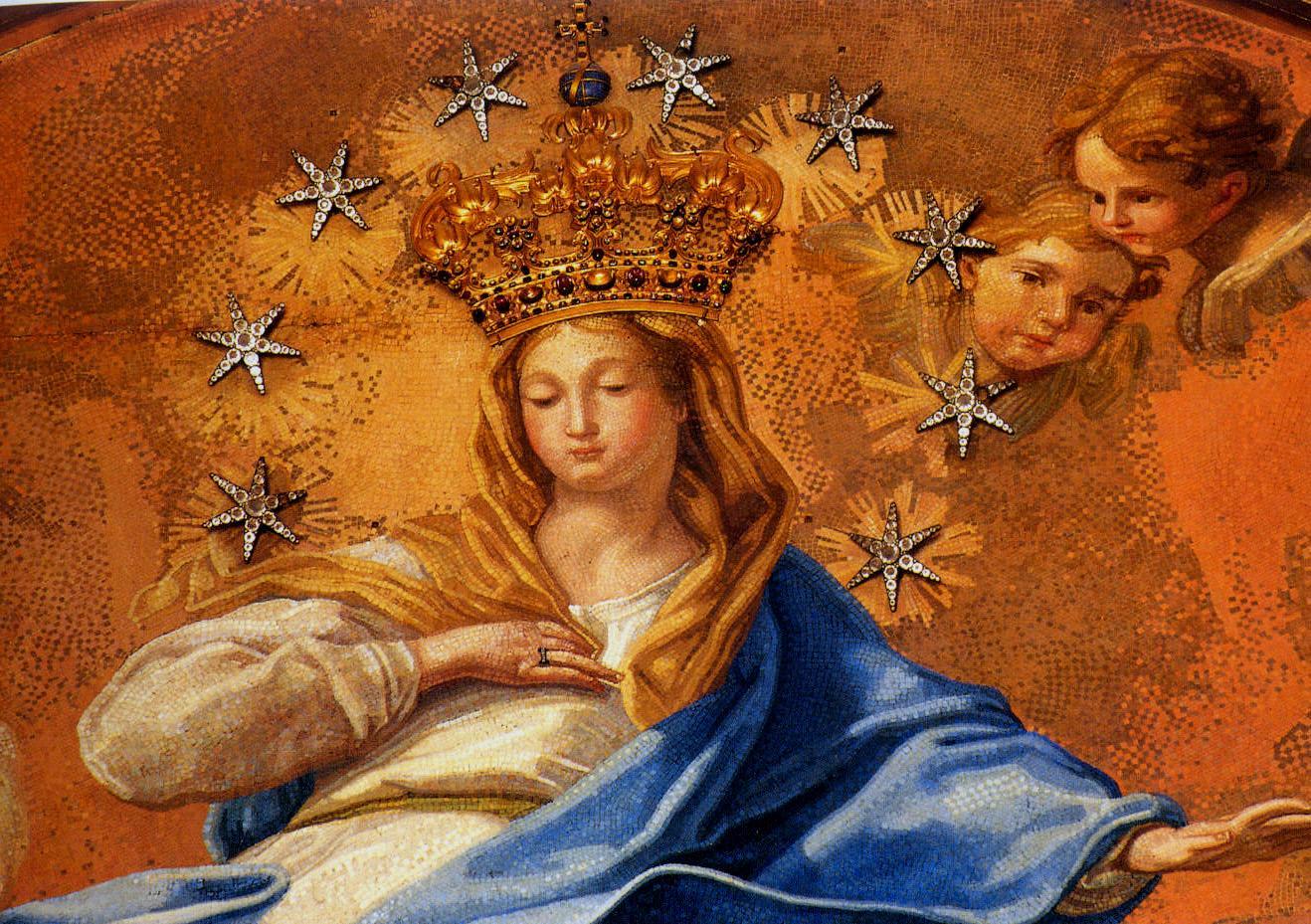
When students of historical art see mosaics of Ravenna, Rome and Monreale appear on a projection screen, they are fascinated by the huge figures, their solemn frontality and the deep penetration of their awestruck dark eyes. A feeling of gloom and the longing to see the originals are developed. The art of mosaics has definitely approached modern tastes and preferences more closely than the art of other epochs. Later when the actual originals are seen they are found to be more beautiful than expected. Although much smaller in size, they retained their monumental character. The art is gloomy in a way but glazed with vivid hues of green gold and blue that appeal to the senses. Like the precious carpets covering the walls, niches and vaults.
There was an intensity of expression and accuracy on contour which was appreciated greatly. Transcending the contingencies of the earthly appearances which seemed to reach out to the archetypes of reality. The art of the past few decades has been struggling and is in dire need of inspiration from ancient mosaics.
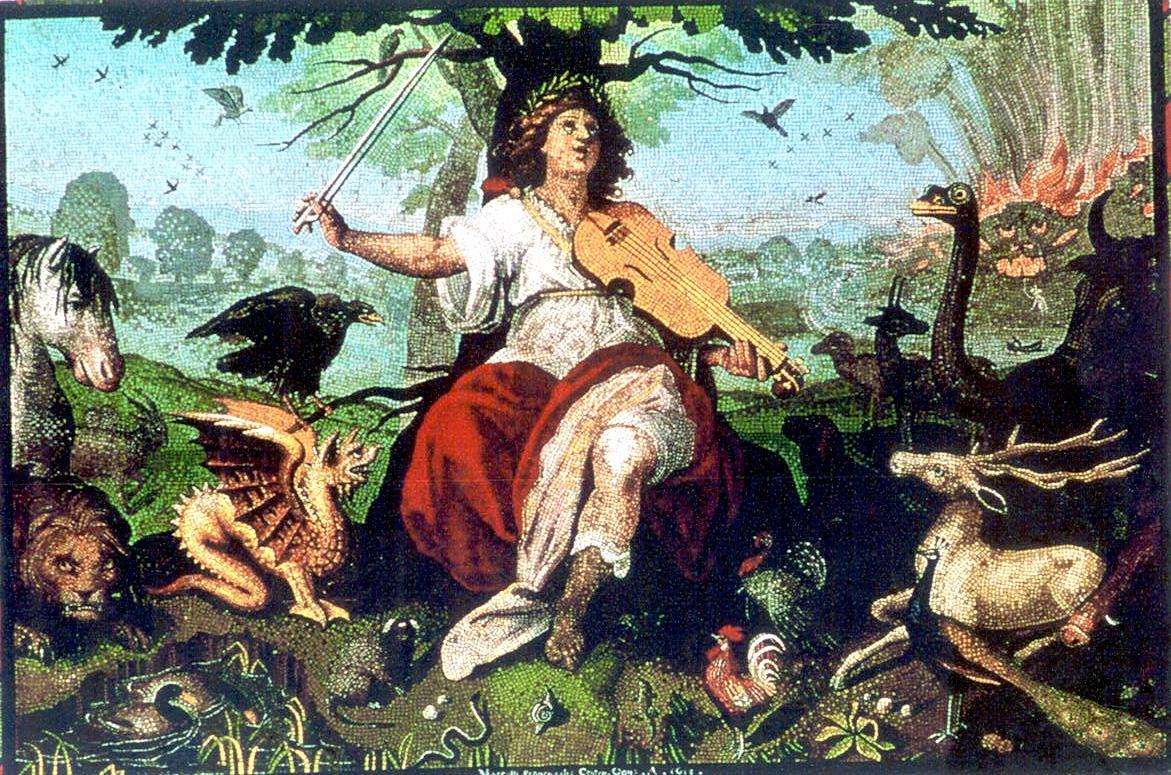
When millions of tiny colored glass cubes lie on a desk, and when taken to a workshop at Ravenna, where they are placed in bowls in hundreds of shades as in a letter case of an office. These presumably cubes are most distinguishable from other materials by the characteristic of having a definite shape of their own; the tessera is soft like clay or oil paints. Unlike when wood and marble are used it does not shape itself into cutting tools but remains a constant building stone. Each tessera is usually shaped by the hammer or slab of color stone into a paste for its special mosaic functions. So basically mosaics have had a great impact on art, although not heavily publicized, just it still hasn’t been given its due recognition.
References
Cheek, M. (2004), Mosaic Art, 3rd Ed, New Holland, Holland. (Cheek, 135, 2004).
Joy of Shards Mosaics Resource (2008), the history of Mosaic art into the modern era.
Levillain, P. (2002), The Papacy, 2nd Ed, Routledge, Venice. (Levillain, np, 2002)
Locktov, J. (2005), Mosaic Art and Style, Rockport Publishers, Jersey. (Locktov, 99, 2005)
Milan: Mosaics From Sant Ambrogio, the Galleria (2008), Ancient Mosaics. Web.
Piper, D. (2002), The Random House Library of Painting and Sculpture, Rutledge, New Hampshire. (Piper, np, 2002)
Ravenna: Mosaics From San Vitale, Sant Apollinare Nuovo, Sant Apollinare in Classe, Battistero Neoniano, Battistero Ariani (2008), Ancient Mosaics. Web.
Winckelmann, J. J. & Lodge, G. J. (1872), The History of Ancient Art, J.R. Osgood and company, Harvard University. (Winckelmann, np, 1872)
Venice: Mosaics from San Marco, Santa Maria Assunta in Torcello, and Murano(2008), Ancient Mosaics. Web.
